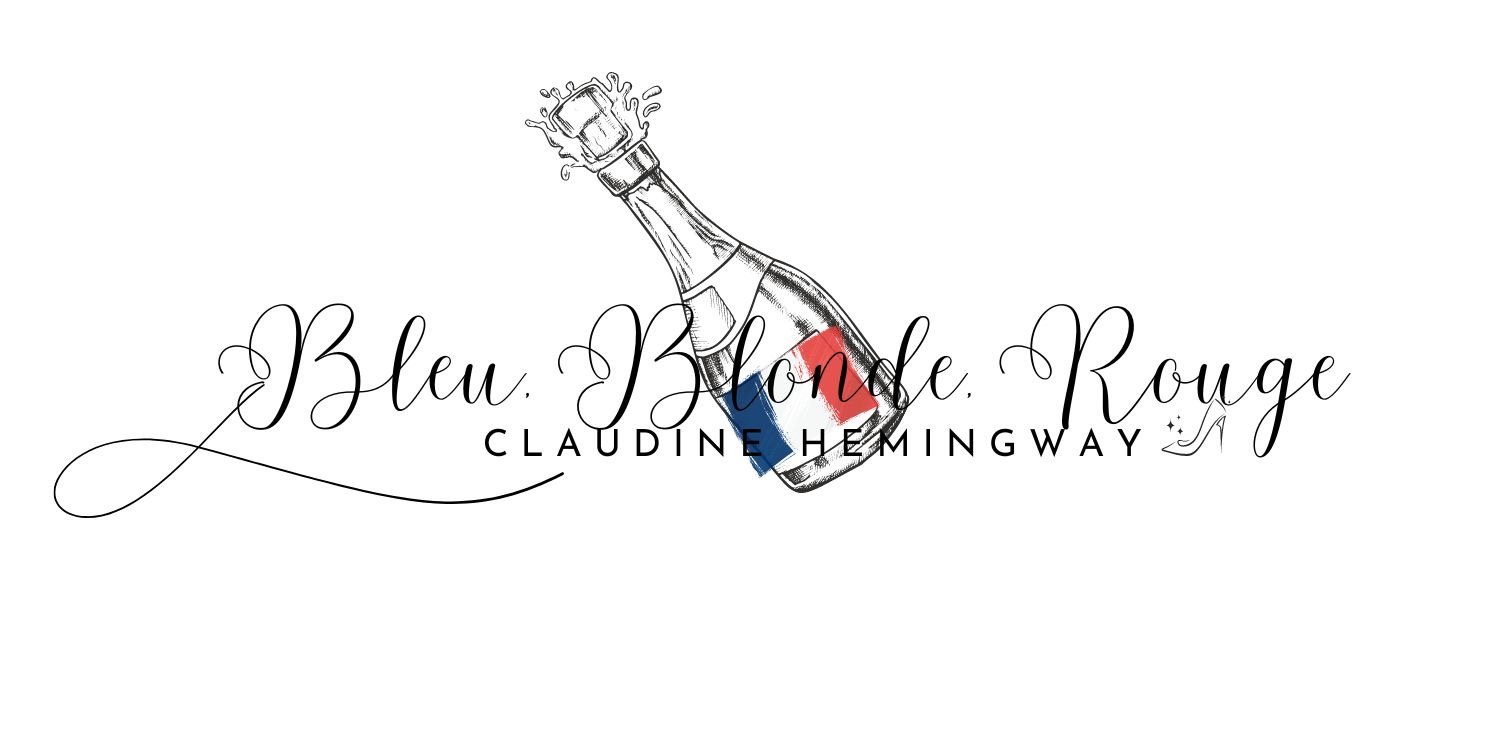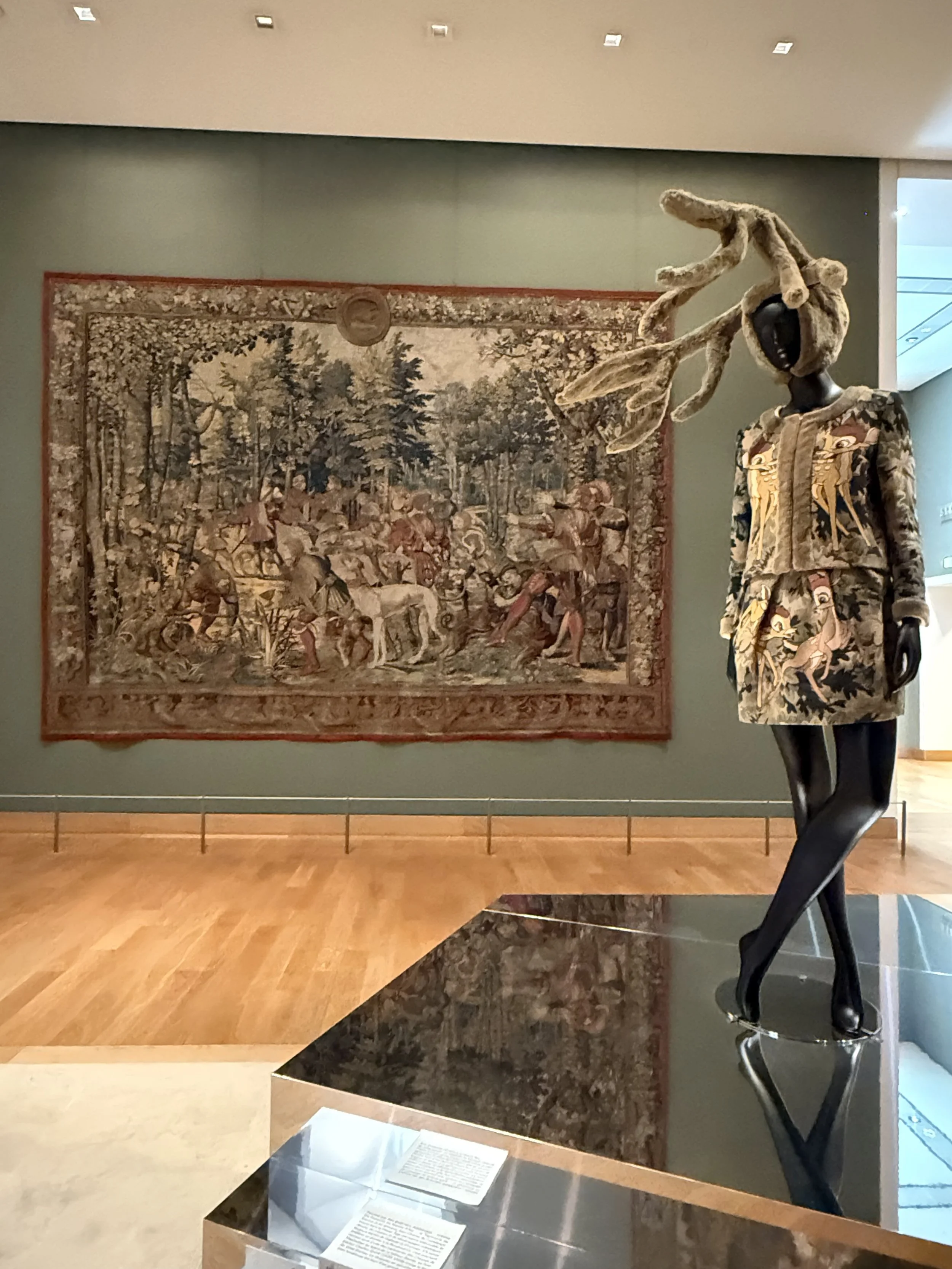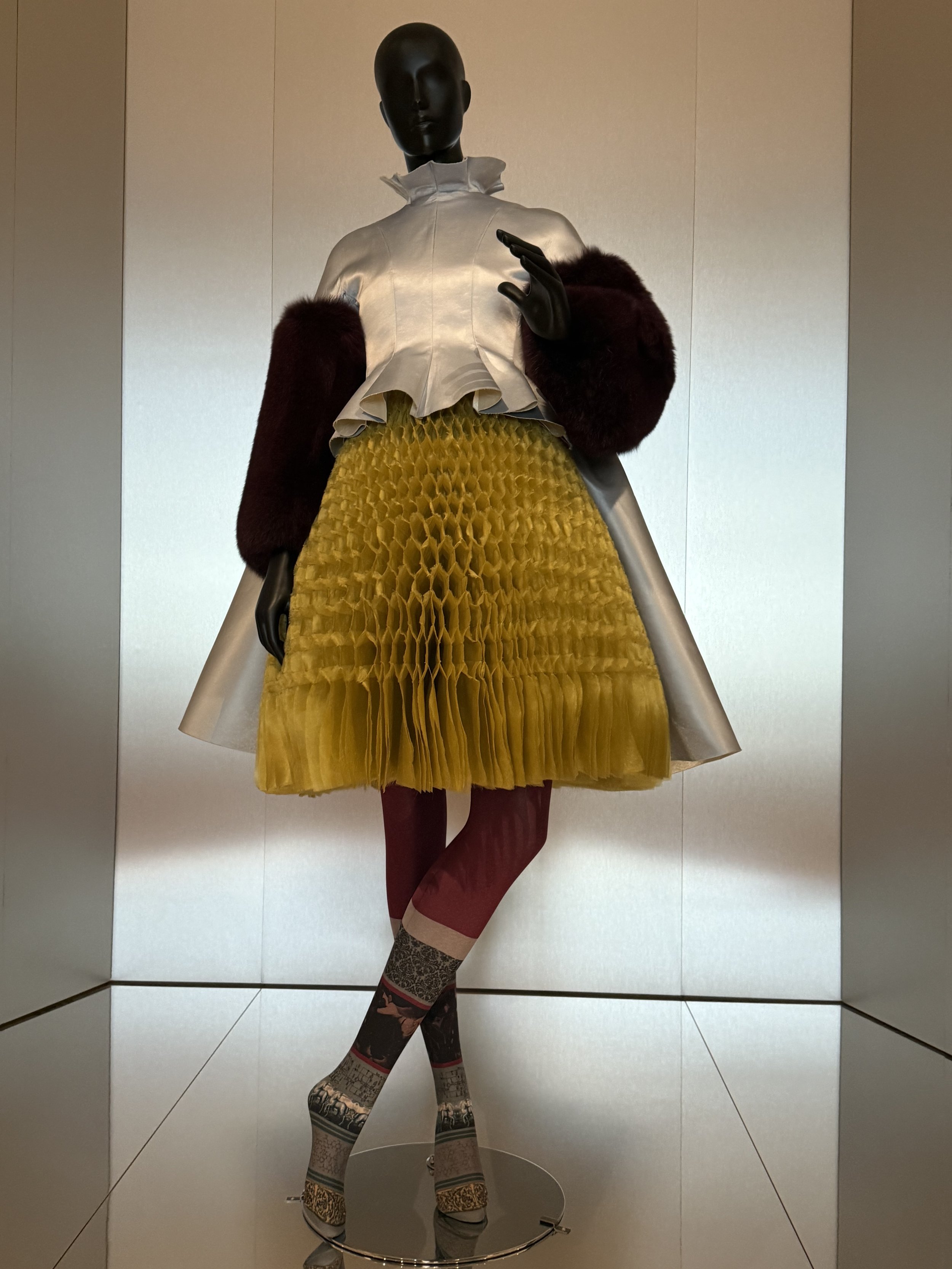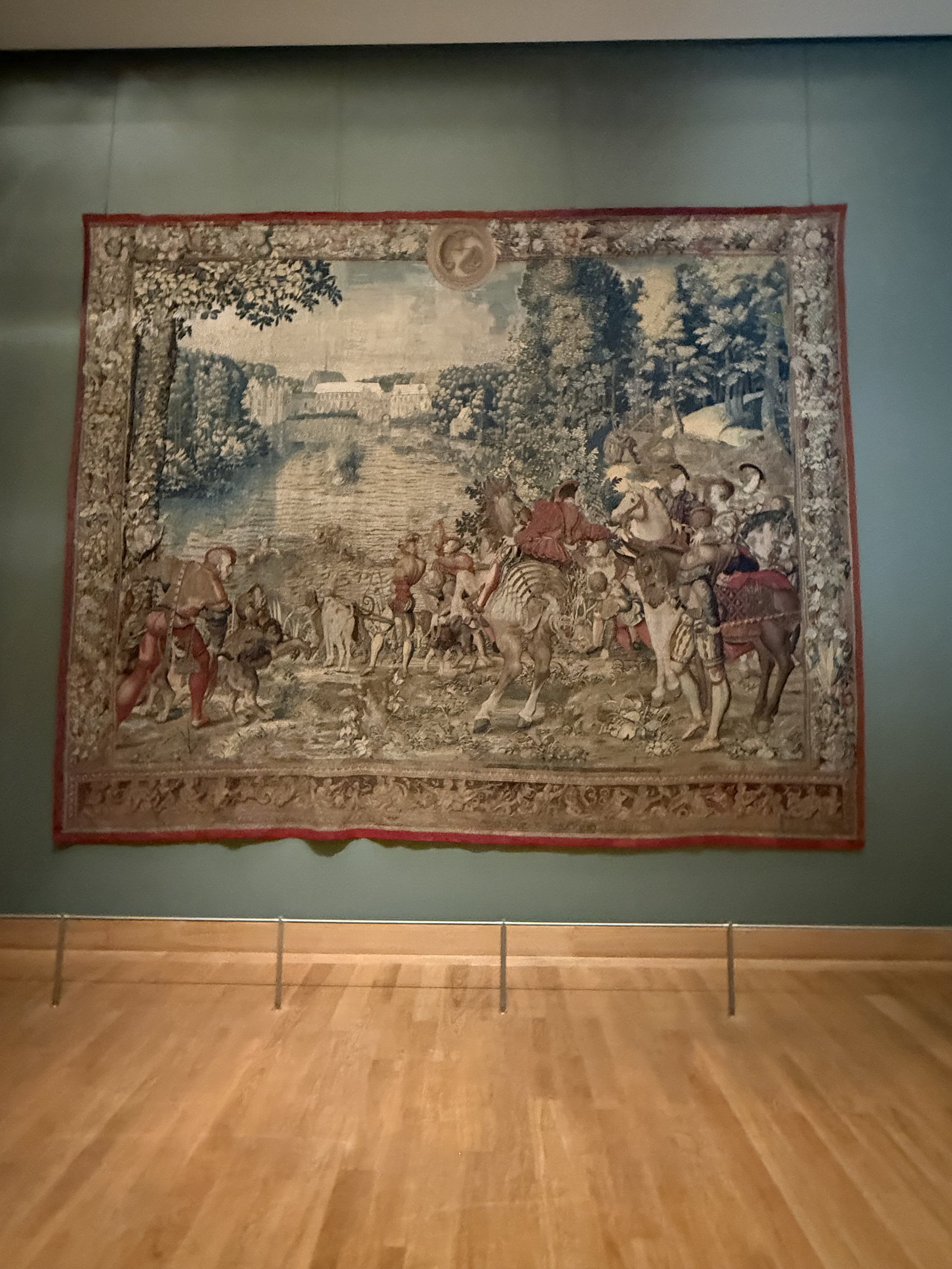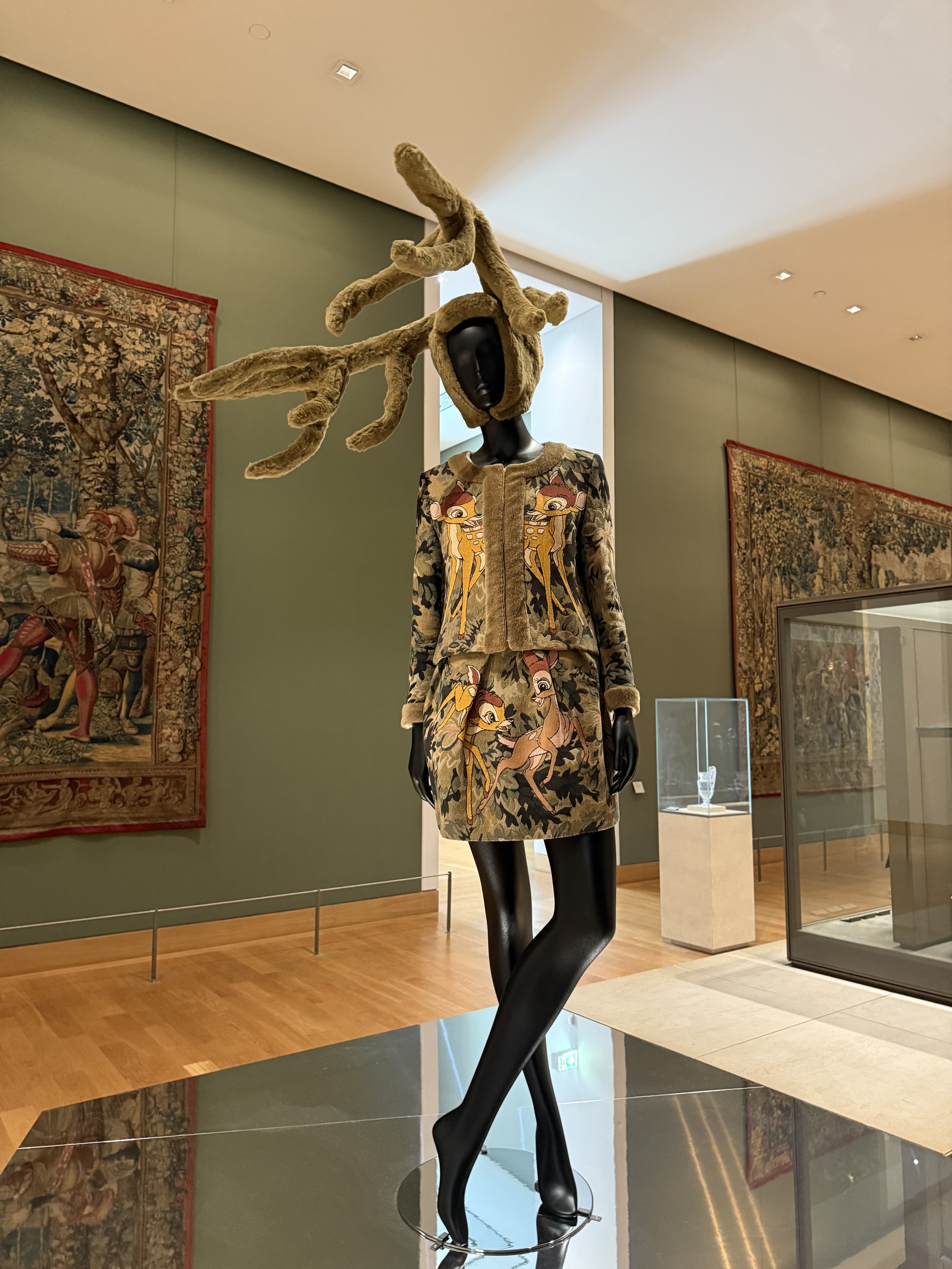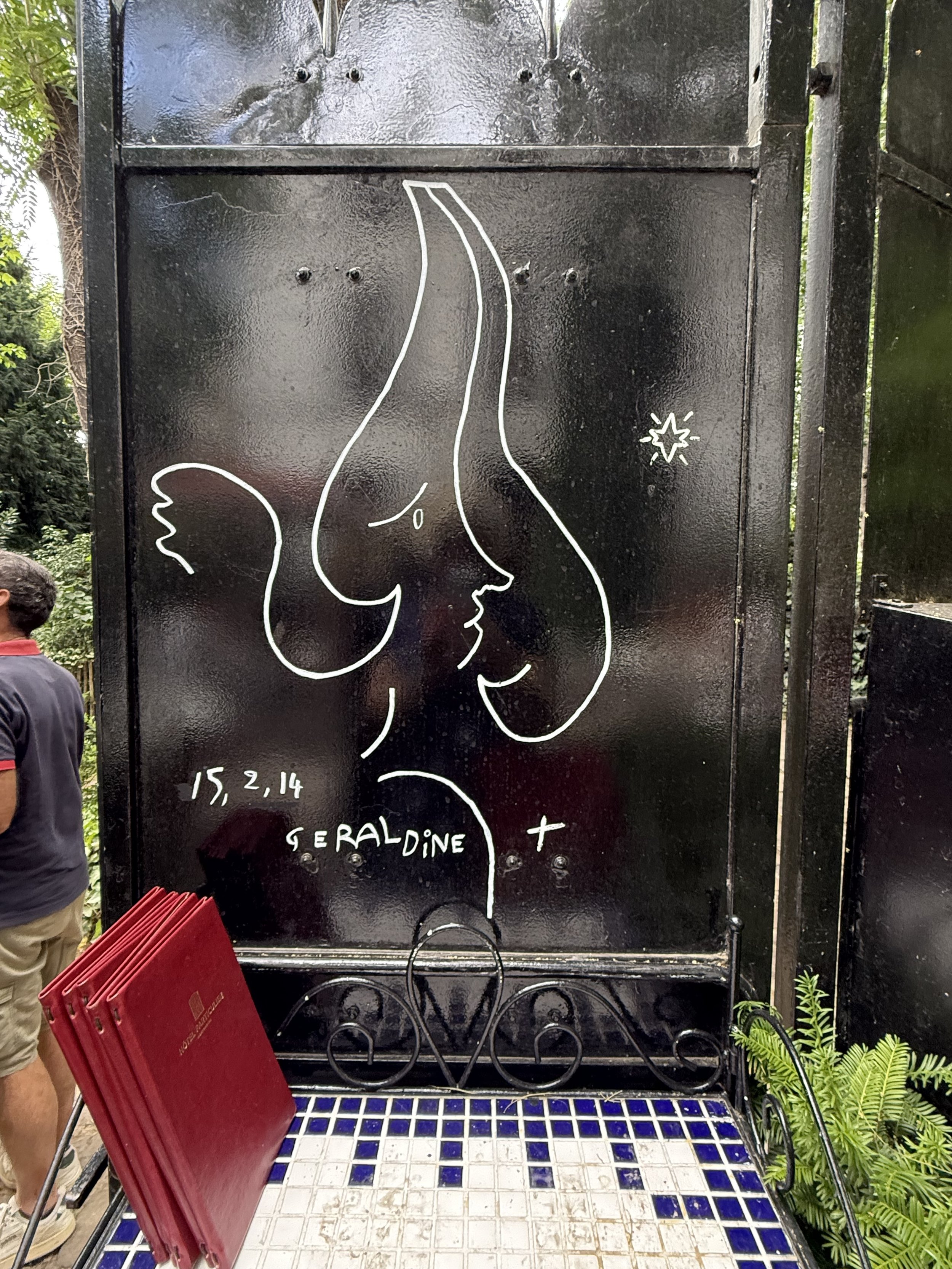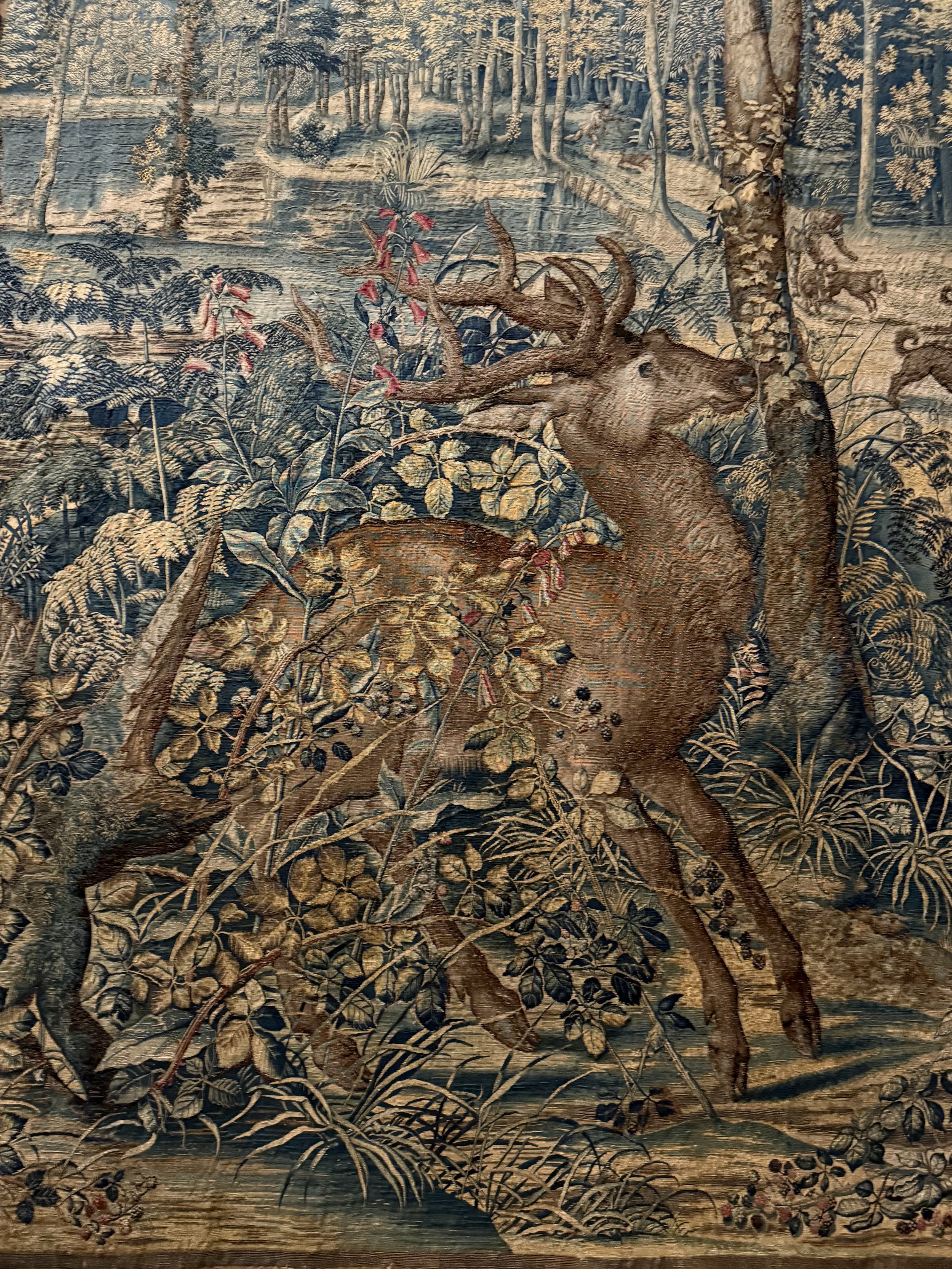Following the golden centuries of the Middle Ages and the Byzantine period, we enter the Renaissance, where the importance was on paintings, sculpture, and tapestries. King of France, François I, spearheaded the transition with grand châteaux in the Loire and brought Italian artists to France, including Leonardo da Vinci.
The French Renaissance slowly began at the end of the 15th century and continued until the death of Henri IV in 1610—a period with a lasting impact, especially on the Louvre. François I ordered the construction of a new palace that would rival those of Emperor Charles V. His vision was continued by his son Henri II and through Henri IV. Architects Pierre Lescot and Philibert Delorme, along with sculptor Jean Goujon, defined the Renaissance, blending classical features and detailed ornamentation visible in the Lescot wing of the Louvre, steps from the exhibition.
With the Middle Ages behind us, we find several of the same elements in the Renaissance rooms. Beginning with a collection of tapestries that fill an entire room, designed just for them. Twelve large tapestries laid out before you date to the 16th century. Les Chasses de Maximilien tapestries depict each month of the year and are dedicated to the theme of seasonal hunting in Belgium. Artist Bernard van Orley designed the cartons between 1528 and 1533, and they were woven at the Dermoyen atelier. Unsure who originally commissioned the set, some sources suggest it was by the Habsburg family, specifically Holy Roman Emperor Charles V, his sister Mary of Hungary, or Their Aunt, Margaret of Austria.
The central images by van Orley focus on deer, boar, or bird hunting, surrounded by the landscape of Brussels. Each of the twelve pieces represents a month of the year, starting with March, following the Julian calendar, which begins each year on March 25. A closer look at the trees in each tapestry reveals the astrological symbol at the top, which provides a clue to the month they depict.
Van Orley also includes images of ceramic vases and open work baskets on the left and right edges, with palm trunks wrapped in garlands and flowers for each season. The lower edge, featuring divinities, sea gods, and sea creatures, is thought to be influenced by Raphael’s work in the Vatican, although van Orley had never been there.
The influence of 16th- and 17th-century tapestries on fashion is still evident today on the runways of Paris and Milan. Capturing the style of the period in wool and gold threads, it is a natural leap to some of the biggest fashion houses and designers. The clothing in Maximilian's collection features puffy sleeves, jackets cinched at the waist, and a wide, almost bubble-like hem that is often open to reveal another color of fabric underneath. The three pieces in this room expertly capture it all, from one of my favorites to the one I have a difficult time even saying the name.
As you enter the room, on your right is an outstanding design by Karl Lagerfeld for the house I shall not name. Each year, beginning in 2002, the house created a special Métiers d’Art collection, whose purpose was to highlight the superior craftsmanship and attention to detail of the house. While I have very intense feelings about the woman who started the label, it would be hard to overlook how beautiful this collection was every year under Lagerfeld.
Each year, Lagerfeld chose a different period and location. Past collections were all titled Paris and then linked with a different place, starting in 2005 with Paris-Tokyo. Often, the show was held in the same city at a fantastic location that brought the entire collection to life. Three pieces from the 2010 Paris-Byzance collection were included in the first part of the exhibit, and a few more will be featured before we are finished.
The piece before you was from the 2012 Paris-Edinburgh that includes Fair Isle sweaters, Scottish tweed, argyle prints, and details influenced by outdoor and hunting life. The show was held in the historic Linlithgow Palace, located in the center of Scotland, where Mary, Queen of Scots, was born in 1542.
On a cold and snowy December night in the courtyard of the castle, the Scotland of the past came alive with exquisite detail.
The look presented here features a white, almost translucent silk cigaline blouse with frayed edges at the shoulder, giving the impression of puffy sleeves that can be found in nearly every one of the tapestries evoking 16th-century menswear. The dress is made from a custom tweed by Lesage, featuring pleats similar to those found in sayon or cassock jackets and robes. The bubble-like hem is perfect with the tapestry of December just behind. The standout feature of this outfit is the necklace and belt, both created by Lemarié for the house, which are adorned with pheasant, pigeon, duck, and guinea fowl feathers, also featured on the gold-plated belt. On the runway, the model wore argyle black and grey tights, making it that much more Scottish.
The December tapestry is a special one of the dozen pieces, featuring the image of Ferdinand in the center, the grandson of Emperor Maximilian I. On a horse in a red sayon jacket, he leans toward the boar that has been caught by his greyhounds, including one in a fancy little coat. The trees are bare during this cold winter month, making it the perfect time to wear this incredible design by Karl Lagerfeld.
There is one name that can be found frequently in the exhibit, but few will know, and it is linked to the major French Haute Couture houses, appearing on numerous designs in the exhibit. The Maison Lesage began in 1924 by Albert and Marie-Louis Lesage. Marie-Louis has taken embroidery classes at the Michonet embroidery school, which was founded in 1858 and counted Charles Worth, the first Haute Couture designer, as a client. After purchasing the house in 1924, they renamed it Lesage. They collaborated with the most prominent designers of their time, including Christian Dior, Elsa Schiaparelli, and Cristóbal Balenciaga.
Albert passed away in 1949, and their son, Francois, successfully ran the company, placing a high importance on growing the skills of the Lesage atelier while maintaining a close link to the past and the art of embroidery. Francoise partnered with Yves Saint Laurent, creating one-of-a-kind designs that ranged from the edging of a dress to an entire jacket, including a recreation of a painting by van Gogh covered in sequins that required more than 650 hours of work. Hubert de Givenchy and Karl Lagerfeld collaborated with Lesage to incorporate metal details into a few pieces in the exhibit. The list goes on to include Thierry Mugler, John-Paul Gaultier, Christian Lacroix, John Galliano, and Christian Louboutin.
In 2002, the company was acquired by Le19m, which Chanel owns, but it continues to collaborate with many other design houses.
Many of the feather and floral details found throughout the collection originate from ateliers dating back to the 18th and 19th centuries. Maison Légeron began in 1770, creating artificial flowers in silk along with feathers that would adorn the courtiers of Versailles. In 1880, it was purchased by Louis Legeron and run until 2021 by his great-grandson, Bruno Legeron, when it was acquired by Le19m. Legeron created many of the most iconic flowers that have adorned Haute Couture designs from YSL to the heels of Louboutin.
In 1880, the plumasserie atelier Lemarié was founded by hatmakers Palmyre and Lemarié Coyette. While hats were very much in fashion at the time, the custom flowers and feathers could all be created in-house by Palmyre. The company continued with grandson André Coyette until it was sold in 1996 to Parafecettio, later acquired by Le19m.
Haute Couture isn’t just about fashion. It’s about dreams, fantasy, and the incredible craftsmanship created by hand. Much like art, and specifically the Objets d’art section of the Louvre, it’s those details — of a tapestry, a Palissy plate, the carved wood on a 17th-century armoire, or even a gilded reliquary from the 14th century —that are truly remarkable. Each and every thing you see is beautiful and created by an artisan skilled to bring it to life, and that is what you should take away from this entire exhibit
Steps away, the Undercover dress by Jun Takahashi is a blend of textures combined to evoke the Renaissance. Japanese designer Jun Takahashi founded his Undercover label in 1993, introducing high-end streetwear in Japan. By 2002, he debuted his spring/summer 2003 collection in Paris, bringing the audience to tears. His collections are a mixture of textures, distressed fabrics, embellishments, and hardware. The design on display in the Louvre is much softer than the menswear of the 16th century.
The top is created by bonding fabric together to give it a more armor-like structure and an Elizabethan collar. Burgundy faux fur covers her forearms for a cool winter night, and the mustard silk organza honeycomb skirt is reminiscent of childhood easter decorations. Take a close look at the tights and the lower sock-like portion. Unicorns, angels, damasc and Renaissance reliefs, as well as engineering and molecular mapping, give that hint of streetwear Takahashi is known for.
The Louvre paired the Undercover design with the September tapestry. Ruled by Libra and dedicated to deer hunting. The bat l’eau scene, a French term meaning that the deer has thrown himself into the water, thinking he would evade the hunters, while the dogs and hunters chase after him. Hunters and the nobles gather on the right and look on in very fancy dress for themselves and their horses.
Many of the tapestries in the collection of twelve share a bit of the Belgian Sonian forest. The largest urban forest that stretches through Brussels, Flanders, and Wallonia, and is protected by UNESCO. In the September tapestry, in the far distance past the lake, is the Ravenstein hunting lodge in the Groendaal Priory. Created at the start of the 14th century, holding the St Augustine monasteries. Sold off to Emperor Joseph II in 1787 and subsequently destroyed, the forest can now be visited through its long and beautiful hiking trails.
The last design in this room is from a favorite artist and designer.
Born in Casablanca in 1949, Jean-Charles de Castelbajac was drawn to military history at a young age. The fascination would transfer to fashion when he created a military jacket cut from an old blanket that John Lennon would later wear.
In 2002, his creations began to expand from the runways and onto the walls of Paris. With chalk in hand, he would quickly draw an angel and sign with a simple +. They started as keepsakes dedicated to loved ones. A love note to family and friends, sometimes with a message and a date that would eventually disappear. I have come across these for years and would always snap a photo of them. Many only last a few days or weeks, and some find a hidden spot that protects them from the elements.
I have seen his chalk art on everything from the Louvre to a gate at the Hotel Particulier in Montmartre. Castelbajac also does prints of his angels, including one he did on the night of April 15, 2019. As the news of the fire at Notre Dame de Paris spread, Castelbajac made his way to the cathedral to stand with the faithful.
Coming full circle, Bishop Ulrich selected Jean-Charles to design the more than 700 liturgical robes that will be worn during the opening festivities and masses for decades. Castelbajac incorporated his signature primary colors with a whimsical and lighthearted response to the church's serious elements.
Seeing this design by Castelbajac makes me happy on every visit. Created for his Autumn/Winter Pret-a-Porter 2010-2011 collection. The Go! Go! The Diva collection was a homage to Lady Godiva and featured many elements of the reinterpreted Middle Ages and Renaissance that he loves.
Inspired by the Bayeux Tapestry, Jeanne d’Arc, and the strong women of the Medieval period. The design on display, featuring a tapestry-like fabric crafted by the Craye atelier in Roubaix, is then accented with faux fur. In true Castelbajac fashion, the whimsical addition of Bambi and his love, Féline. The “Medieval Camoflage Bambi” includes a faux fur headpiece in the shape of antlers, completing the Bambi look. Multiple pieces, including shoes, were created for the 2010 collection, such as a sequin-covered Bambi and a strapless dress.
Tied to the tapestries in a way only JCDC can, the large antlers can transfer to the August tapestry. Set again in the Sonian forest near the Les Etangs de la Patte d’Oie pond. A large deer is trapped in the thick bramble while a majestic stag is chased by dogs on the right side. The deer might triumph over the hunters in this one, spurred on by the adorable little Bambi.
